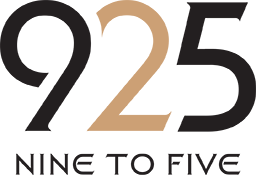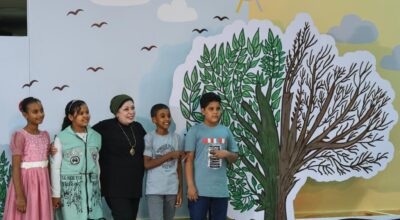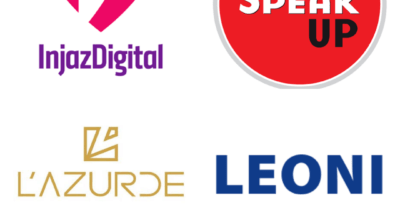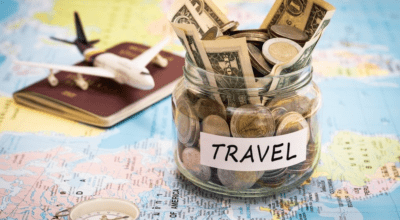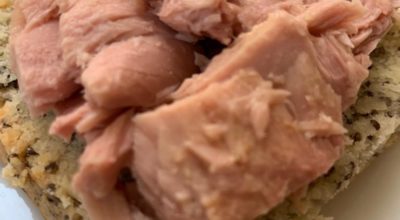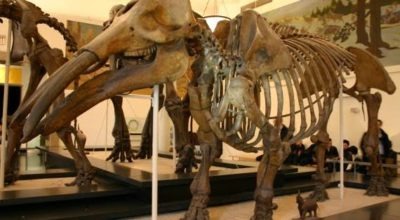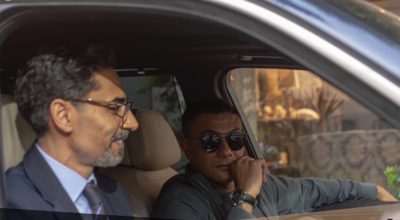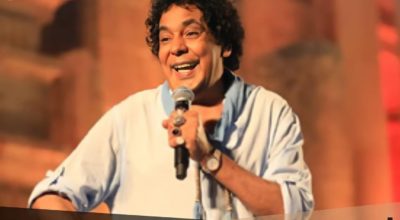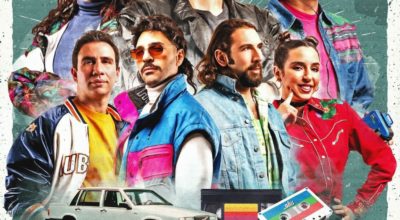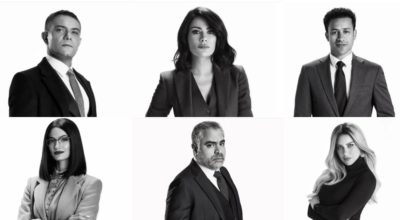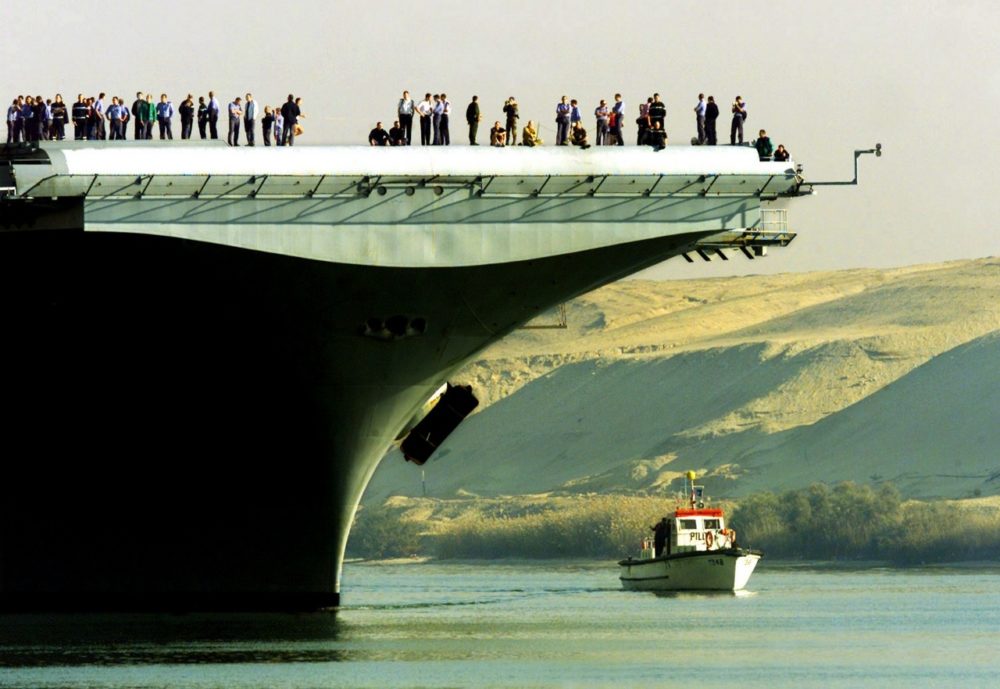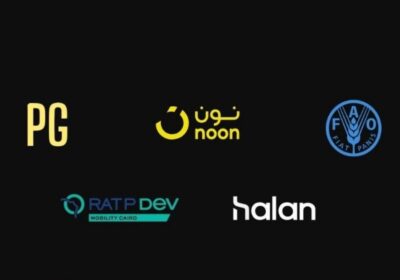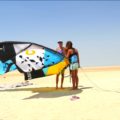Aladin Abdelnaby is an Egyptian former war photojournalist who witnessed more than five armed conflicts in the Middle East and Central Africa through the lenses of his cameras. Beneath his impressive body of work as a photographer, however, lies a passionate musician and an American University in Cairo (AUC) student whose low performance resulted in his disqualification for a while.
We had a lengthy conversation with the veteran to talk about his unusual journey to a career path full of life-threatening dangers and adventures.
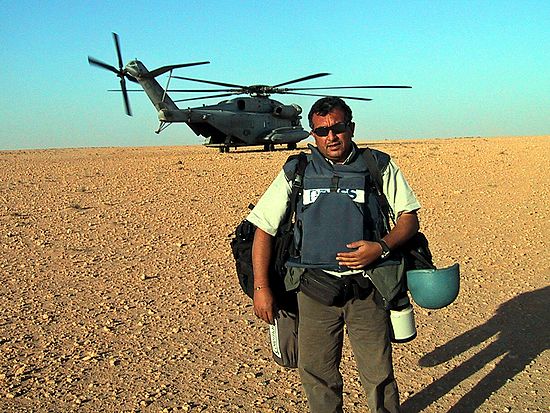
A picture of Aladin Abdelnaby taken around 2004 during the Iraq war. “I was dropped somewhere in the Iraqi Western Desert by a Marines Sea Stallion Helicopter (seen behind)…” reminisced Abdelnaby.
“I just wanted a degree, really.”
Choosing Journalism: From D’s and F’s to A’s and B’s
In the very beginning of his life in college, Abdelnaby was an AUC student who had a flair for music and was far from determined about what he wants to take up as a profession. At first, he enrolled to study solid-state physics. “And if you ask me what that is, I’ll tell you that I don’t know. Everyone I’ve asked couldn’t explain it either,” he joked. “But my sister was a science major at AUC during that time and had told me that solid states is new and is going to boom, but of course it didn’t and it was useless.” According to Abdelnaby, his studies in that department mainly revolved around mathematics, physics and electronics. During the first three semesters – and largely because of his poor performance in chemistry – Abdelnaby was put under probation which he failed to escape before getting disqualified for a year. “And I had to prove that I was good at something academic before they could re-admit me,” he recalled.

A photograph from Iraq around 2003 taken when a major force from the U.S. Marines 1st Expeditionary Unit was heading to capture and seize the Fallujah. Reuters/ Aladin Abdelnaby.
Back then, Abdelnaby’s father was working in Al Ahram, where Tarek Nour, the person we now know as an the advertising and communications mogul, was teaching computers. “And I knew Tarek Nour through the music scene – both of us played music,” he clarified. “So, I did that. I found it interesting. I issued a petition to get re-admitted into AUC and it worked. But this time, to exit my major probation, I switched from science to arts,” he explained. And through the process of major elimination and a passion for photography, Abdelnaby settled on opting for the study of journalism and mass communication. “I just wanted a degree, really.”
But he couldn’t settle on a profession just yet. He even discontinued college altogether two years before graduation! “I decided to pursue a musical career. So, I left college for four years. But then I changed my mind and thought, no, I’m going to go back and finish my degree,” he explained. But this time, Abdelnaby was a student who scored A’s and B’s and, according to him, was three or four points away from honors! “Because this time, I was willingly going back to college to study something I found interesting.”

A picture taken by Aladin Abdelnaby for Reuters as firemen took on the consequences of an explosion caused by a diesel pipeline in Al Ain Al Sokhna,Egypt. Reuters/ Aladin Abdelnaby.
“Music to me by then, was as if it didn’t even exist.”
Going to War: Abdelnaby’s First Armed Conflict
“The first photograph I ever took in my life was around 1964. I was 10 or 9,” recalled Abdelnaby as we talked about what first sparked his curiosity towards photography. He was on a school field trip where he took his father’s camera. He had instructed him to take photographs with two different settings – one for the indoors and the other for the outdoors. He remembered, “Luckily, all the photographs were good. I thought, wow, I’m a photographer now!” But in about two weeks later, he recalled, his following photography trip completely flopped. He was intrigued. “And that pushed me to start reading about photography.” In 1970, he received a camera as a gift and started growing his hands-on experience with help from his friends who were better at it. Shortly after his graduation with a bachelor’s degree in journalism and mass communication, he started doing commercial photography work for a while. “I worked on a lot of things; fashion shows, hotels, big tech companies…”
“Music to me by then, was as if it didn’t even exist,” Abdelnaby said surprisingly. He had sold what he remembers as an impressive collection of musical instruments and pedals for $2,000. For the same amount, he bought the impressive photography gear of a German photographer who was briefly in Egypt.
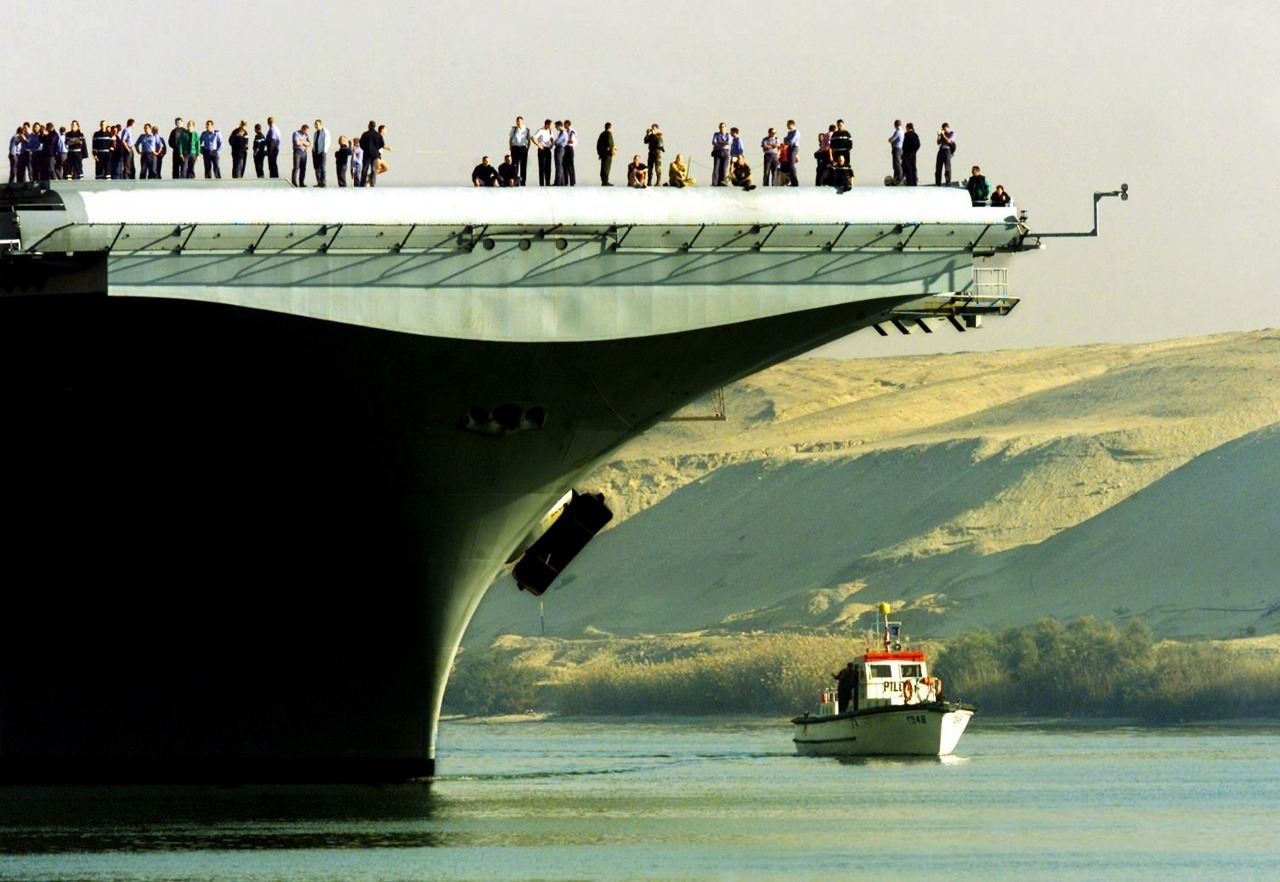
French sailors standing on the deck of the French aircraft carrier ‘Clemenceau’ as it transits the Suez Canal on its way to participate in the first Iraq war, ‘Desert Storm’. Reuters/ Aladin Abdelnaby.
Abdelnaby, who spent 21 years of his life as a photojournalist, asserted that he didn’t expect to work for long in the field. He was just in it to see what it’s like. And his first job, which was for Reuters, was as far from a war as one could possibly imagine. He was covering a squash world championship in Egypt. A friend of his who worked for Reuters at the time got him the gig. “I’m going to get paid while I watch the world champions compete,” he said after mentioning that he once played and loved the sport very much. “I said yes. And I did a good job.” Subsequently, Reuters hired him as an on-and-off freelancer from October to March of 1986. Shortly afterwards, his friend who got him his first Reuters assignment got into a dispute with the news organization that resulted in him leaving a vacancy. Abdelnaby was offered that empty spot and accepted it in May of 1986.
The first time Abdelnaby approached a dangerous conflict with his camera was during the 1989 Sudanese coup d’état when then-military-officer Omar Al Bashir took over as president and reigned for 30 years in power. And although one might intuitively assume that the first time is the toughest one, Abdelnaby thinks of it as among his best. No one had pictures of Omar Al Bashir yet and everyone wanted them. Faced with instructions to get to Sudan as soon as possible and a decision by EgyptAir to halt all flights to the country, he managed to get permission from a contact of his in the Sudanese Army to enter using a private jet. Reuters secured its funds. “We were the only news organization in the country. Once that became known, all media started contacting embassies to get permissions into the country using private jets. They were all denied,” he recalled proudly. “And Omar Al Bashir gave orders that allowed us to take photographs of the army, tanks and police. So, it was a perfect assignment.”
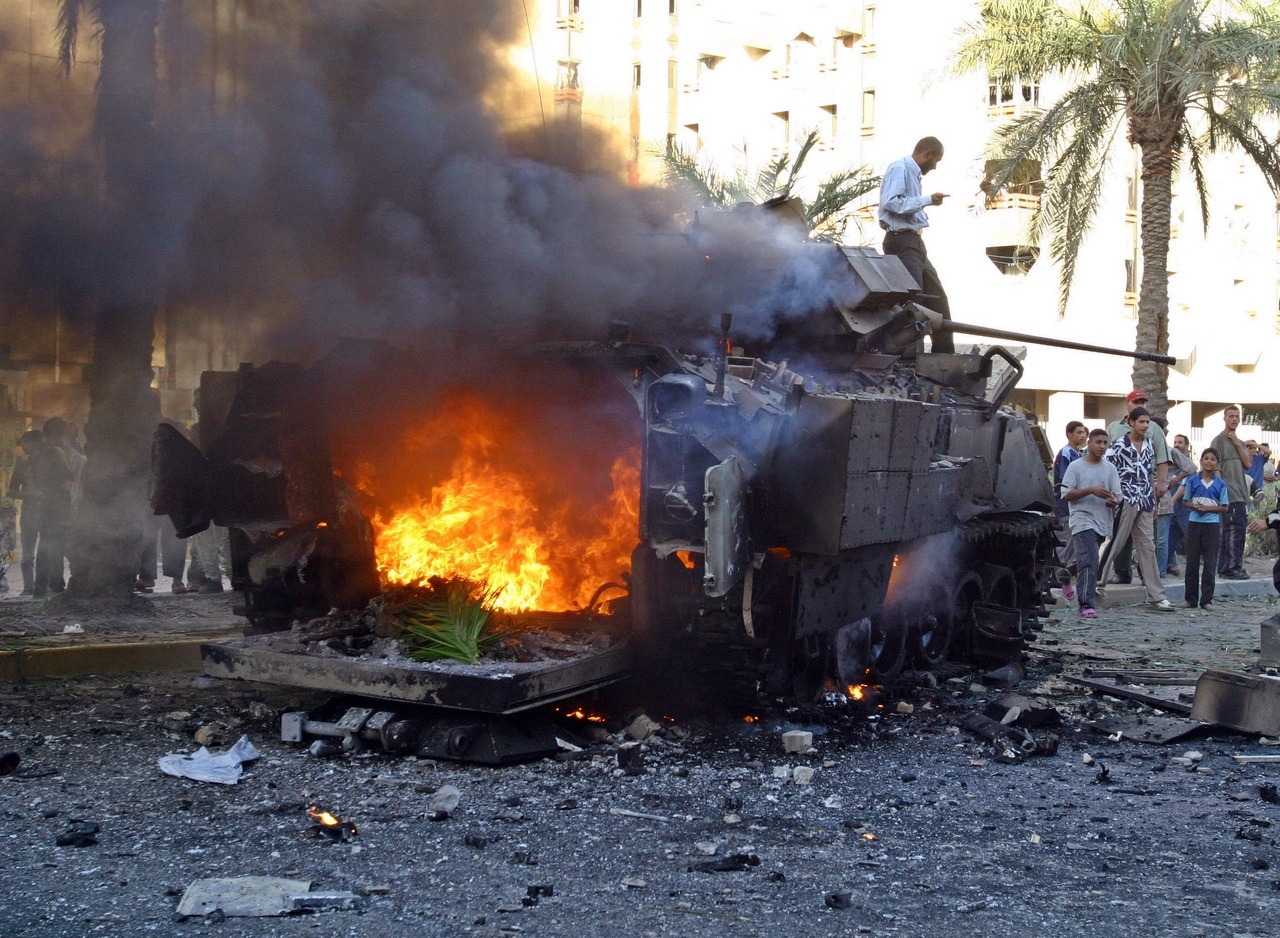
A photograph taken by Abdelnaby back in 2005 in Iraq during the battle of Haifa Street where an armored vehicle that belonged to the US army can be seen on fire. Reuters/ Aladin Abdelnaby.
“What appealed to me about journalism is not photography. It’s the life of a photojournalist; always on call, always travelling. […] Adventure… Adventure, and it’s a rush – an adrenaline rush in your body all the time. And I’m an adventurer. Or, at least, I thought I was. I still am.”
Almost Killed and Always Traveling: The Occupational Hazards and Work-Life Balance of a War Photojournalist
“I was shot at several times during the last gulf war. I was going to be kidnapped. I was near explosions twice,” he told us as he walked us through a sample of the occupational hazards of the job. And with this tremendous risk he takes often on a job that requires immense travel, the question of what this does to one’s personal life must be asked. “I can’t say it’s part of why I want to do it. But these threats were always part of the job. And if I accepted this job, I have to accept everything that comes with it,” said Abdelnaby. To him, it’s just as any occupational hazard. “I might think of these situations after the threat – but never during it.”

Abdelnaby took this picture in Sadr City, Baghdad, Iraq. Pictured are members of the Iraqi insurgents looking out to fire at the US forces using a Rocket Propelled Grenade Launcher (RPG). “It was a fierce and bloody battle,” said Abdelnaby. Reuters/ Aladin Abdelnaby.
As for the question of what this does to his work-life balance, Abdelnaby clearly and confidently admitted that this question never crossed his mind. “To be honest with you, for most of my time in Reuters, I did not have a social life. My friends I didn’t see. I was married and got divorced, twice, during that period… Because I’m never there,” he said. “But that never made me rethink changing [careers].”
His career as a photojournalist with Reuters ceased in 2006 partly due to the numerous strokes he suffered by that time. “My doctor told me that I can’t be in places where there aren’t medical facilities around, and I also got bored,” he elaborated.
Currently, Abdelnaby teaches photography and photojournalism in several institutions and conducts workshops around the region. During the beginning of one of those workshops in Amsterdam, he told us, he was still getting to know six photographers from Africa. One of them, from Nigeria, loudly asked him to teach him to become a war photographer. Abdelnaby attempted to clearly remember the details of the situation, “I asked him, do you get afraid? Do you get scared? And he replied – as if he was programmed – no, I don’t. So I told him that I won’t teach you, because you’ll probably die.”
